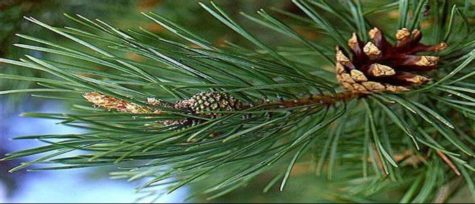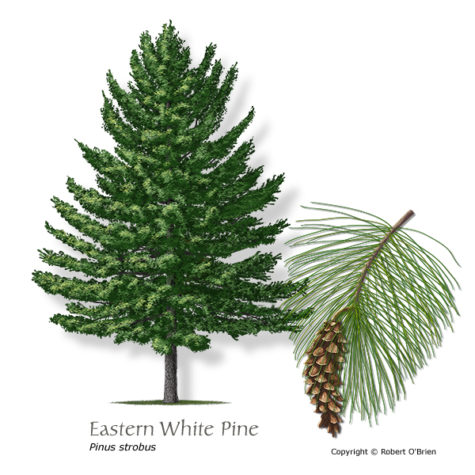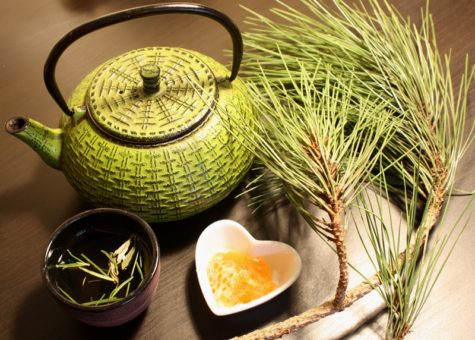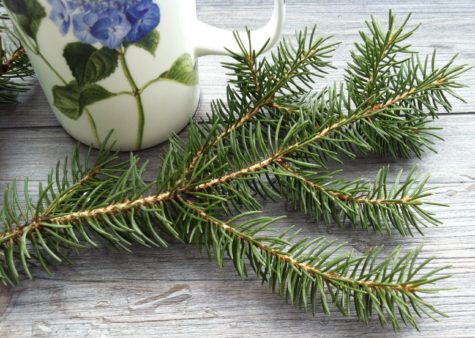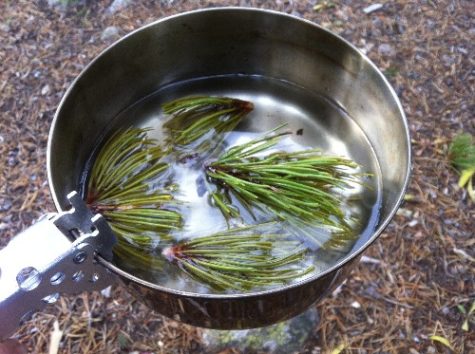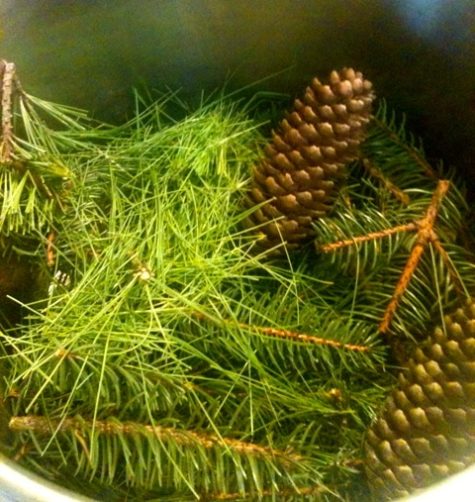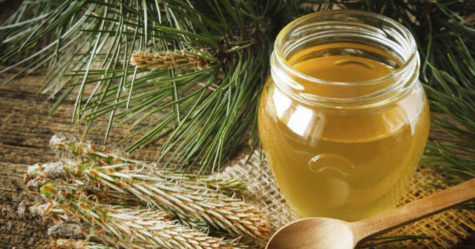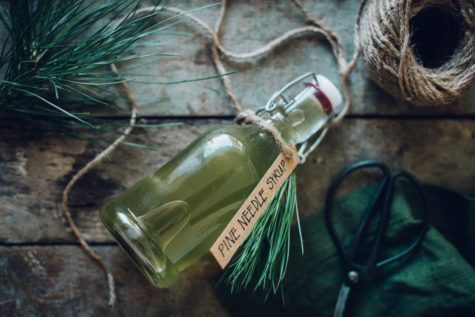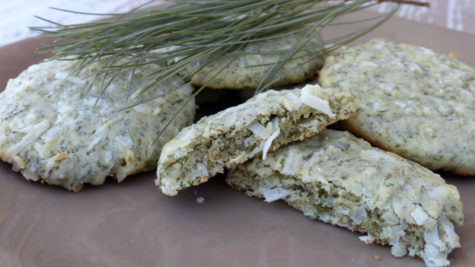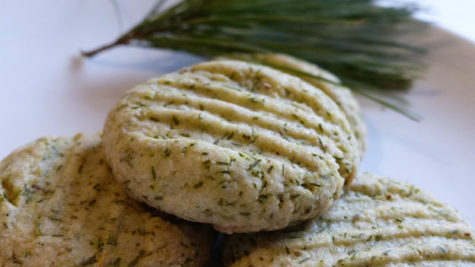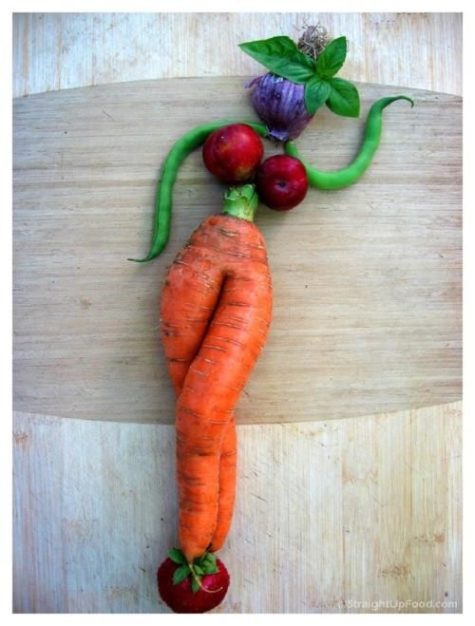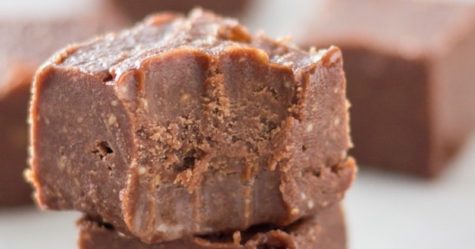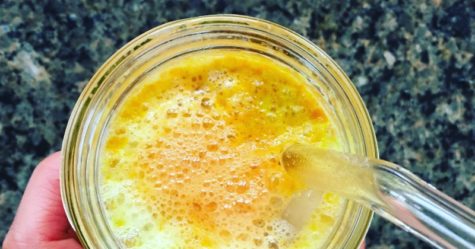Yearly Archives: 2018
Pine Needles ~ Benefits and Nutrients
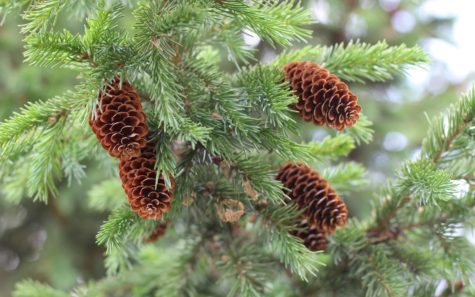
Pine needles range in size from 3 to 5 inches and are a deep forest green color. The long, thin needles vary slightly from variety to variety, depending on the region in which they grow. Pine needles have a strong pine scent, and a biting resinous flavor. In the wild Pine needles can be foraged year-round.
Foraged Pine needles can be used for a variety of applications. Pine needles are used most often for the oils and aroma within, to impart a pine scent or flavor to teas, ice creams, and liquors. Pine needles can be used like applewood or mahogany in fires to smoke meats or chicken, adding a hint of pine flavor. Place Pine needles under fish while cooking or chop like rosemary and add to marinades or brine. A variety of recipes can be found here.
Nutritional Value
It is said that Pine needles can be used as a natural remedy for up to 80% of human diseases. Pine needles are high in vitamin C; a tea made with the needles of the Pine tree has been used to stave off scurvy when no other sources of vitamin C were readily available. In a tincture or tea, Pine needles can help alleviate congestion and other respiratory problems. Components in Pine needles have decongestant, disinfectant and wound healing properties.
- Vitamin C Content
Pine needles purportedly have three to five times more vitamin C than an orange, depending on what source you read, but there’s no hard and fast rule for how much C is in a pine needle.
Regardless of the exact percentage, we know that pine needles and pine bark make an excellent natural vitamin C supplement. At least they’re potent enough to cure scurvy, a chronic condition caused by vitamin C deficiency that, left untreated, results in death.
One historical account relates the 1536 story of French explorer Jacques Cartier, whose crew was cured of scurvy with a tea of pine needles and bark given to them by the Iroquois after the crew suffered months of nutritional deprivation at sea.
Even though the crew boiled the decoction, which would have destroyed a significant portion of the vitamin C, there was still enough ascorbic acid and various amino acids to completely reverse their symptoms of scurvy.
It was such a dramatic change, the tree used for tea became known as “tree of life”. There’s no way to determine exactly what species it was, but we know the tree of life was a conifer. Eastern white pine is just one of the handful of candidates that could have been used.
The ascorbic acid (vitamin C) content of pine needles seems to vary significantly depending mainly on the species of pine and the age of the needles. The Eastern white pine needles of this USDA Forest Service study had between 0.72 mg and 1.87 mg of ascorbic acid per gram of pine needles.
New needles had the lower concentration, while 1 year old needles had 1.18 mg of vitamin C per gram of needles, and 2 year old needles had as much as 1.87 mg.
According to the USDA, 100 g of orange has 53.2 mg of vitamin C, or .532 mg/g. That puts pine needles at slightly more vitamin C for new needles, twice as much for 1 year old needles, and 3.5 times as much vitamin C for 2 year old needles.
The gist of the research is that ascorbic acid content increases with the age of the needles. Does that mean older needles are best for pine needle tea? Not if you’re after taste. Older needles make a stronger, bitter, more piney tasting tea, so if you want a milder, more delicate tea, look for brighter green young pine needles.
And don’t boil them. Boiling not only destroys vitamin C, but it also releases more terpenes–the organic compounds that make pine smell like pine–making more of a turpentine-like tea.
Other research indicates that balsam fir needles have significantly more vitamin C than white pine, so species matters, and the bark of white pine has more than needles. If you want a more potent brew of vitamin C, throw in some pine bark, although I can’t vouch for flavor, since I’ve never tried it.
Although there are several species of pine that make suitable tea, Eastern white pine (Pinus strobus) is one of the trees more commonly associated with pine needle tea, probably for its superior flavor.
Health Benefits of Pine
There have been a number of studies done on the nutritional qualities and healing powers of pine needles and bark. Here are just a few:
- Cancer prevention
(Antioxidant, antimutagenic, and antitumor effects of pine needles (Pinus desiflora)):
“These results demonstrate that pine needles exhibit strong antioxidant, antimutagenic, and antiproliferative effects on cancer cells and also antitumor effects in vivo and point to their potential usefulness in cancer prevention.”
- Cardiovascular health, antioxidant, immune function
(Comparison of methods for proanthocyanidin extraction from pine (densiflora) needles and biological activities of the extract):
“Flavonoids are known to be effective scavengers of free radicals. In particular, proanthocyanidins are flavonoids that possess cardiovascular protection, antioxidative activities, and immunomodulatory activities…In this study, we discerned an efficient extraction method to achieve relatively pure proanthocyanidins from pine needles and evaluated the biological functions of the resulting extract, which could potentially be used for its efficacious components in functional food products.”
- Potential treatment for anxiety, depression, and dementia
(Effect of new polyprenol drug ropren on anxiety-depressive-like behavior in rats with experimental Alzheimer disease):
“The obtained results…indicate that Ropren [a trademarked preparation based on extract of spruce and pine needles] is potentially active in the management of affective impairments in the experimental model under consideration. It also has a profound beneficial effect on the anxiety and depressive-like behavior in rats with model Alzheimer’s type dementia, and thus may prove to be a novel natural treatment.”
Dangers and Cautions:
Avoid pines that aren’t really pines. These include Yew pine (Podocarpus macrophylla) and Norfolk Island pine (Araucana heterophylla). And stay away from the highly toxic yew (genus Taxus).
Most sources warn of the potential dangers of pines like Ponderosa pine (Pinus ponderosa) and Lodgepole Pine (Pinus contorta), citing the possibility of abortion from drinking tea made with these species. And some sources say all pines could potentially cause abortion.
According to Green Deane Jordan of EatTheWeeds, pine needle tea drunk in moderation shouldn’t cause any problems unless you’re allergic to pine:
“The basis for this rumor is a veterinary study decades ago. If you are a cow and you eat many pounds of Ponderosa Pine needles you have a 5 to 8 percent chance out of 100 of having an abortion or still-birth. If you boil a huge amount of pine needles in water for hours down to a small amount of gross liquid and you drink it, then maybe it would cause an abortion. A few of needles soaked in hot water is no threat to anyone except for possible allergies.”
If you’re worried about it, stick with tried and true Eastern white pine, and of course exercise moderation.
Sources:
Pine Needle Tea
Pine needle tea has been prized for thousands of years for its many health benefits. What’s so good about pine needle tea? Here’s what I found out at Forest Holidays:
- Pine needle tea has a pleasant taste and smell (always a good start).
- It is rich in vitamin C (5 times the concentration of vitamin C found in lemons) and can bring relief to conditions such as heart disease, varicose veins, skin complaints and fatigue
- Vitamin C is also an immune system booster which means that pine needle tea can help to fight illness and infections.
- Pine needle tea also contains high levels of Vitamin A, which is good for your eyesight, improves hair and skin regeneration and improves red blood cell production.
- It can be used as an expectorant for coughs and to help relieve chest congestion; it is also good for sore throats.
- It brings you clarity and mental clearness.
- It can help with depression, obesity, allergies and high blood pressure.
- Pine needles contain antioxidants. These reduce free radicals, which are harmful to humans and can cause disease.
- Taoist priests drank pine needle tea as they believed it made them live longer. There is researched evidence that pine needle tea can help to slow the ageing process.
- Pick some pine needles and let them soak in boiling water on your stove and it will add a crisp pine smell all over the house. Perfect for Christmas.
How to make pine needle tea
- 1/2 cup young, bright green Eastern white pine needles
- 3 cups water
Instructions:
Bring water to a boil in a stainless steel pan. Add pine needles to water and reduce heat. Simmer for 20 minutes and remove from heat. Cover and let sit overnight or continue to next step and serve.
Strain out pine needles, sweeten to taste, and serve tea hot or cold.
Notes:
Make sure not to boil the pine needles in order to preserve the vitamin C and prevent the release of bitter terpenes. Vitamin C doesn’t last long, so drink this tea as soon as possible.
Pine Needle Tea In The Wild:
- Collect pine needles
- Build a fire
- Light it
- Boil water in a mess tin
- Add pine needles and let them infuse in the boiling water
- Sieve and serve
Enjoy your tea. Who knows, you might live to be 103 with 20:20 vision, a mind as sharp as a pine needle and no varicose veins. We’ll drink to that!
A word or two of caution:
Firstly, don’t try pine needle tea if you are pregnant. Secondly, most pine varieties can be used, but steer clear of Yew and Cypress which can sometimes be mistaken for pine. A good rule of thumb is to avoid flat needles. If in doubt, ask a Forest Ranger.
Found at: Forest Holidays
Evergreen Syrup
Spruce tip syrup used to be quite popular back in the day. It was used throughout Europe and by the pioneers in North America. Since Spruce tips grow in the spring, this syrup would have been a seasonal type of medicine. I generally make my evergreen syrup using needles and cones as these parts of the plant are most readily available, and have medicinal value as well.
Energetically, evergreens are super appropriate to use as medicine throughout the winter. Although most of the trees have lost their leaves by now, evergreens remain green, showing us that nature lives all year long. Evergreens are also helpful with the particular ailments that abound during the cold and dark season.
For the following recipe, I harvested from Norway spruce (Picea abies) and White pine (Pinus alba). Not the time of year for the tips so I used needles, twigs, cones. It turned out quite delightful with a predominantly sweet taste and evergreen-almost citrus undertones.
Evergreen Syrup Recipe:
- White pine needles, some twig ~2 oz weight (other pine species can be used)
- Spruce needles, 2 cones ~2 oz weight (other spruce species can be used)
- Filtered water to cover
- Honey- half of the amount of decoction that remains (a 1:2 ratio honey:decoction)
- Water added to evergreens
The weights are listed because I had them handy, however there is no set amount – it all depends on how much syrup you want to make. Put the plant material in a pot and cover with water. Bring this to a boil and then lower to simmer until the liquid is halved. I used a spoon as a measuring stick. You can also have a measuring cup handy to pour the liquid back and forth until it measures half of water added.
Reducing the decoction to half of the original liquid took almost ten hours. The liquid is then strained out, put back in the pot without the needles, and then the honey is added. The amount of honey to add is equal to half the amount of concentrate, so 8 ounces of concentrate would require 4 ounces of honey, or a 2:1 ratio. Warm and stir the mixture, and the syrup is done!
Medicinal Uses for the Syrup
Tree medicine is very powerful when grounding is needed. It fosters opening up to old wisdom, and letting oneself be cared for by the Earth. The evergreen forest is quiet, and feels limitless and mysterious. Evergreen syrup is good medicine for reflecting, meditating, and otherwise conjuring up introspective energy.
Decomposition of evergreen needles lowers the surrounding soil pH to provide a particularly acidic environment, a fact that I find interesting and relevant to its use as an antiseptic.
In Europe, pine products have been used as medicine since the Middle Ages, and their medicinal properties are pretty uniform across the Pinus genus. It acts as a stimulating antiseptic for respiratory infections and stuck mucus, and is useful for bronchitis, and at onset of colds and flu to stop infection. Pine is also used for coughs and asthma.
Spruce is useful to cut phlegm in the throat and lungs, and for opening air passages. It is high in vitamin C content, and can also be helpful for bladder conditions and in cases of leucorrhea.
Overall, Spruce and Pine syrup is great medicine to have on hand during the winter and early spring season. It can be used for acute illness, and as a winter tonic to provide a bit of sunshine in the form of a local source of vitamin C.
Evergreen syrup is also really tasty, making it an easy medicine to work with as it can be added to hot water, porridge, pancakes, or taken straight.
From: Herb Geek
Coconut Pine Cookies
Boreal forest meets tropical fruit in a shortbread cookie.
Ingredients
- 3 cups unbleached flour
- 1 cup organic cane sugar
- 1/4 cup shredded sweetened coconut
- 10 tbsp pine powder
- 1/2 cup melted butter
- 3 eggs
- 1 tsp vanilla
Instructions
If you are unfamiliar with pine powder, it’s very simple to make, here’s a link: Pine Powder.
Place all dry ingredients into a bowl. In another bowl blend together melted butter, eggs, and vanilla. Mix the wet ingredients into the dry ingredients and blend well.
Roll cookie dough into balls about 3/4 the size of a golf ball and place on ungreased cookie sheet. Use a fork to flatten the cookies until they are about 1/4” thick.
Bake at 350°F for about 10-12 minutes. Makes about 5-6 dozen.
Found at: Edible Wild Food
Pine Cookies
Pine needle cookies that taste great. No pine nuts are used in this recipe.
Ingredients:
- 3 cups unbleached flour
- 1 1/2 cups organic cane sugar
- 8 tbsp white or red pine powder
- 1/2 cup melted butter
- 3 eggs
- 1 tsp vanilla
Instructions:
If you are unfamiliar with pine powder, it’s very simple to make, here’s a link: Pine Powder.
Place all dry ingredients into a bowl. In another bowl blend together melted butter, eggs, and vanilla. Combine the wet ingredients into the dry ingredients and blend well.
Roll cookie dough into balls about 3/4 the size of a golf ball and place on ungreased cookie sheet. Use a fork to flatten the cookies until they are about 1/4” thick.
Bake at 325°F for about 10-12 minutes.
Makes about 5-6 dozen.
Found at: Edible Wild Food
How To Make Molasses
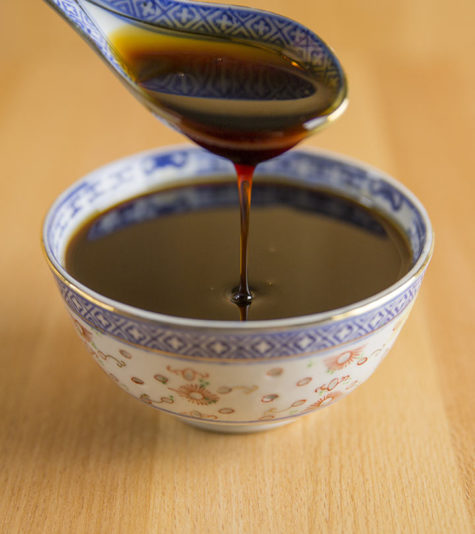
Take pumpkins, boil them, press the juice out of them, and boil the juice to a proper consistence. There is nothing else necessary. The author of this book, John George Hohman has tasted this molasses, thinking it was the genuine kind, until the people of the house told him what it was.
Beautifying Raw Foods That Also Improve Immunity
Some of the most beautifying raw foods on the planet are also some of the best you can eat for optimal immunity, along with increased vitality and strength. That’s because many raw foods are high in minerals which are the micronutrients that your body absolutely must have for optimal health.
Without enough minerals, our skin, mood, and immunity all suffer greatly. They keep our bodies functioning on a deeper, cellular level, and the antioxidants found in many raw foods also help improve our beauty and defense mechanisms against various types of disease.
Several vitamins are also important for natural beauty and optimal immunity. So check out these 10 beautifying raw foods that are packed with nutrients that will improve your hair, skin, nails, immune system, and even your digestion and brain health too!
Pineapple
Would you believe that pineapple is one of the best sources of Vitamin C you can eat?
Pineapple’s Vitamin C content rivals that of most all fruits. The delicious sweet fruit contains over 100 percent of your daily Vitamin C needs along with high levels of the enzyme bromelain which helps break down proteins in the body. These properties not only improve digestion and immunity, but they also reduce acidity in the body which increases your body’s alkalinity to prevent inflammation.
Fresh or frozen pineapple is the kind of pineapple you’ll want to consume, though. Avoid the canned or dried varieties which have been more heavily processed and often have added sugars and/or oils. Use frozen or fresh pineapple in a smoothie, enjoy it as a snack, or pair it with a morning bowl of overnight oats if you like.
Camu Camu
Camu camu is a superfood that’s so beneficial for women that it’s even considered to be a medicinal herb in some cultures. The fruit comes from the Amazon and is the highest source of Vitamin C per serving on the planet. It’s also a good source of amino acids and several trace minerals.
Because of its high Vitamin C and amino acid content, camu berry is amazing for your skin, improving anxiety, and it can help aid in digestion. Camu camu also has antiviral properties which can help fight off candida and other fungal-related infections that demean your health.
The fruit is sold as a freeze-dried, raw powder here in the United States and it adds a sharp, tangy texture to smoothies. It pairs well with pineapple, banana, berries, and cacao, or it can be used in raw desserts, cookies, or added on top of a bowl of overnight oats. Just be sure not to heat camu camu since Vitamin C is heat-sensitive.
Raw Cacao
Speaking of cacao, it’s amazing for your health and beauty. Raw cacao is high in sulfur, a beauty-boosting mineral that also helps detoxify the liver.
Raw cacao is also high a potent source of antioxidants, flavonoids, and other minerals such as iron and magnesium. Cacao is even high in copper and zinc which improve your immunity and the strength of your blood.
Just be sure to go for the good stuff when you consume raw chocolate. You’ll want to avoid chocolate that is high in sugar and eat it raw and unsweetened, or choose dark chocolate with at least 90 percent cacao content. Or you can have raw, superfood chocolate—your choice.
Carrots
Like other orange-colored fruits and veggies, carrots are loaded with beta-carotene which is a precursor to Vitamin A, a natural beauty and immunity-boosting vitamin. Carrots are also one of the best sources of Vitamin C among all vegetables, and they’re high in water, fiber, and low in sugar.
You can eat carrots raw or cooked, but do be mindful most of the Vitamin C found in carrots is lost during the cooking process since Vitamin C is heat-sensitive. For this reason, to retain all the benefits carrots have to offer, be sure to eat them (and other fruits and veggies) in raw form whenever possible.
Carrots are also great for hormone balance, filling you up, and they can even be added to smoothies for a boost of nutrition and natural sweetness!
Acai Berry
Goji berries are an incredibly popular berry that’s great for your skin, and acai berry is another one of the top berries to consume for beauty and immunity. Acai berry is an Amazonian superfood that is a powerful source of omega-3 fatty acids which protect your brain, skin, heart, lungs, and your nervous system.
Acai is also a wonderful source of amino acids and several key minerals that improve your strength and immunity. It’s also low in sugar which makes it great for your blood sugar levels.
Acai fruit is sold as a raw, freeze-dried powder, so consume whichever you prefer. If it’s your first time using acai, pair it with blueberries and raw cacao where it takes on an especially lovely flavor.
Raw Almonds
Raw almonds are well-known for their high-protein content, but they’re also excellent for your skin. Almonds are a top food to consume to improve natural beauty because they’re rich in Vitamin E, magnesium, iron, zinc, copper, monounsaturated fats, and fiber, which slows down the release of insulin in your body.
Almonds also support collagen levels in the skin which can help to prevent and reduce fine lines and wrinkles. Almonds even improve the body’s response to stress, which can trigger inflammation if kept unchecked, and they’re alkaline foods when consumed in 100 percent raw form.
Dark Cherries
Dark, sweet cherries should be one of the number one foods you eat to beautify your skin and improve your immunity. Cherries contain dark compounds of antioxidants that promote longevity and decrease inflammation in the body and are very similar in nutrition to berries.
Dark cherries can be bought fresh or frozen, and they pair wonderfully with cacao, greens, berries, and other superfoods in a smoothie. Dark, sweet cherries can also decrease joint pain, improve sleep, and help protect the heart and skin from oxidative stress.
Romaine Lettuce
That’s right, one of the most simple greens that’s not kale is also one of the best you can eat! Sweet and hydrating romaine lettuce is incredible for your beauty and immunity because it’s one of the top sources of Vitamin C among all greens, it’s high in water to hydrate the cells, and it’s even a natural source of omega-3 fatty acids, believe it or not.
Use romaine in raw juices, smoothies, or make a huge salad with it and enjoy its naturally hydrating and beautifying benefits!
Pumpkin Seeds
If your skin and nails could use some help quickly, add some pumpkin seeds to your diet and consider yourself brand new! Pumpkin seeds are one of the best sources of zinc, protein and iron, three nutrients that improve skin health, blood sugar levels, immunity, and energy levels extremely quickly.
Pumpkin seeds can even improve your mood and blood sugar levels since they’re one of the best sources of magnesium among all nuts and seeds. And, they’re one of the best seeds you can eat to improve alkalinity due to their naturally high chlorophyll content.
Hemp Seeds
Hemp seeds are an incredible source of omega-3 fatty acids, they’re one of the best sources of iron and zinc you can eat, and they’re a complete source of protein making them great to consume in place of animal products. Hemp seeds are also a great source of chlorophyll which improves alkalinity, immunity, digestion, and the look of the hair, skin, and nails.
And of course, all raw fruits, vegetables, and greens are amazing for your beauty and immunity. Consume as many as you desire along with these 10 raw foods above, and enjoy the fall season with a greater sense of well-being and great skin too!
Article written by Heather McClees of The Soulful Spoon
Easy Peppermint Chocolate Fudge
This easy peppermint chocolate fudge is made with only 5 ingredients and takes 5 minutes to make and 1 hour to set. It is infused with amazing peppermint essential oil and is gluten and dairy free.
Ingredients
- 250 grams cashew butter
- 1/3 cup coconut oil, melted
- 1/3 cup raw cacao powder
- 2 tablespoons pure maple syrup
- 6 drops peppermint essential oil
Instructions
- Add all ingredients to a blender/food processor/thermomix and blend until smooth.
- Spoon the mixture into a loaf tin lined with baking paper and smooth over with a spatula.
- Place into the freezer for approximately 1 hour to set.
- Take out of the freezer and cut into desired portion sizes.
Cleansing Pineapple, Apple, and Ginger Juice
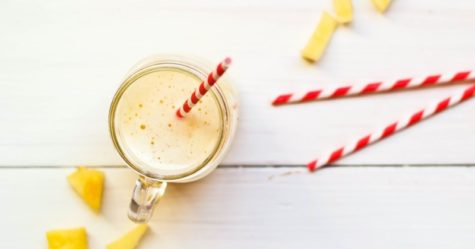
Ginger root has a slew of health benefits ranging from high in antioxidants to being used as a natural remedy for motion sickness or nausea. Ginger is also great for stimulating and aiding in digestion by breaking down food so that nutrients can be absorbed quicker.
Pineapple and apples also have wonderful cleansing properties, especially if you are feeling sick, as they are packed with vitamin C and magnesium. Vitamin C helps to support your immune system with antioxidants, while magnesium is essential for muscle and nerve function. Basically, just what the doctor ordered this fall season!
Ingredients
- 3/4 small pineapple
- 1 1/2 apples
- 1/4 piece of a thumb of ginger
Instructions
Simply wash and chop the pineapple, apples and ginger and put into your juicer to be juiced. Store in an airtight container (mason jar) and enjoy for the next 3 days!
Found at Raw Food Recipes
Sunshine juice
A naturally sweet and low-glycemic raw, veggie juice that’s packed with ingredients to boost your mood, heart health, improve your blood pressure, and ensure optimal digestion of nutrients!
Ingredients
- 1 head of organic romaine lettuce, washed (or 1 bunch of organic kale)
- 1 organic lemon
- 1 large organic carrot, peeled
- 2 stalks of organic celery
- 1 one-inch knob of ginger root
- 1/2 an organic cucumber (or zucchini)
- (optional): 1/4-1/2 a green apple (or a leftover apple core)
Instructions
Add all the ingredients to the juicer in the order listed and juice. Pour the juice over a glass of ice for a nice and chilled juice, and enjoy! Clean the juicer immediately after (this is much easier to do right now than later). Let the juicer parts dry well and put away for tomorrow.
Found at Raw Food Recipes
